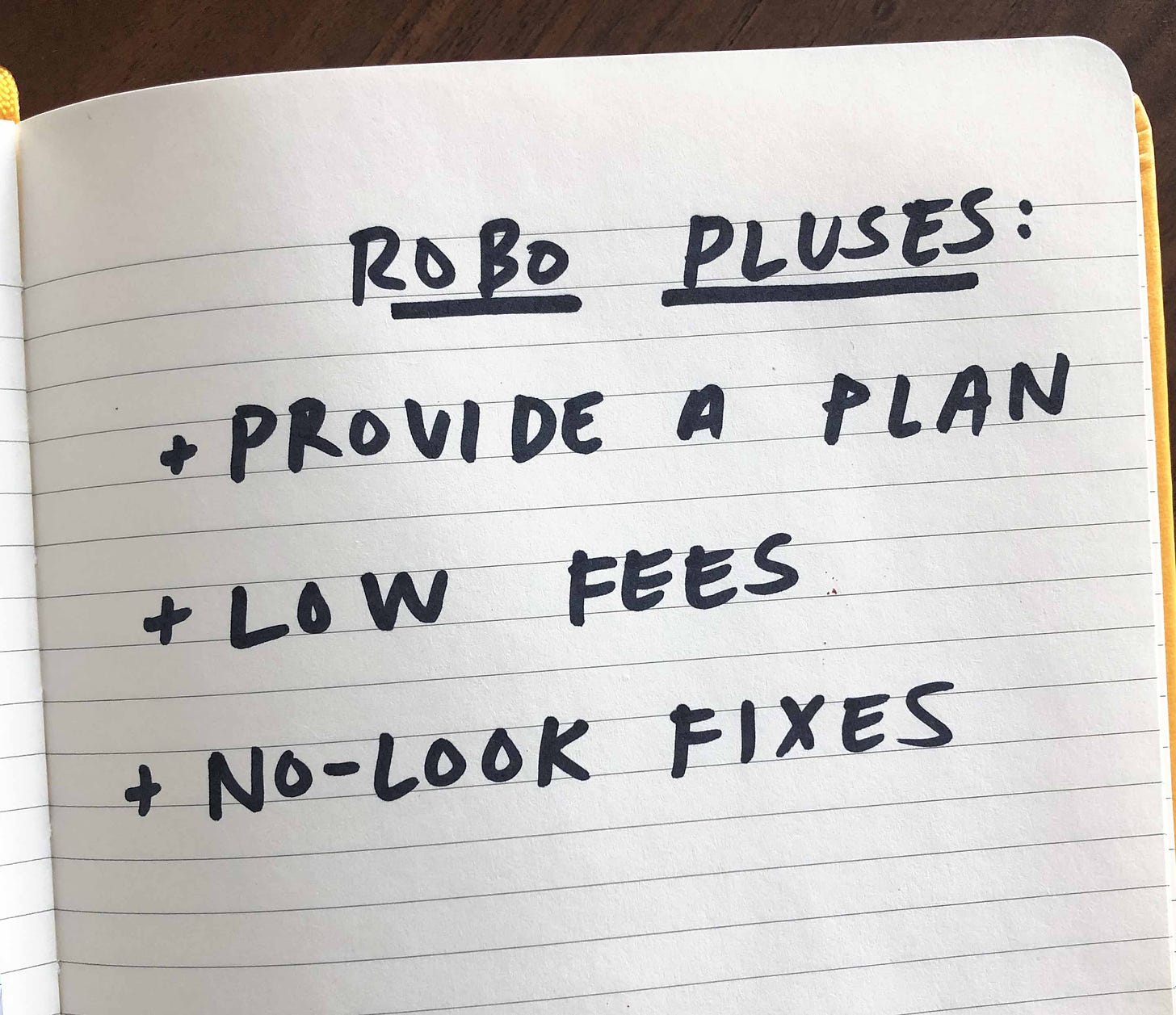Can a Robot Make You Rich?
Digital financial advisors make smart money moves for you while you’re going on with your life.
Self-driving cars might not be everywhere yet, but they’re coming, for sure. Since last October, if you live near some Phoenix suburbs, you’ve been able to summon a fully driver-less ride from Waymo — meaning there’s no human at the wheel. We’ve been talking about this for a decade, but disruption in the automotive world is absolutely happening. A similar revolution is slowly taking place in the wealth management industry. Yes, the robots are taking over your investments. Much of the personalized guidance you’d get from your money guy or gal can now come from an algorithm — from suggesting the right low-cost index funds for your IRA all the way to more sophisticated moves, such as tax-loss harvesting. But are there downsides?
After the crash of 2008, digital-first financial advisement services like Wealthfront and Betterment sprung up, aimed at millennials and young professionals who are comfortable with tech, and less reliant on getting advice in person. Of course, the big guys are getting involved: Schwab has been building out their Intelligent Portfolios service while low-cost fund specialists Vanguard have launched Digital Advisor. Meanwhile, the number of digital-native services has expanded, too, from Acorns — aimed to help you “microinvest” with spare change, and Ellevest, a for-women, by-women financial banking and advisement service.

Digital advisors aren’t for everybody. If you have a high net worth and a complex web of assets, the services might not give you a fuller picture of where you’re at and where you’re going. Likewise, if you’re taking an extremely hands-on approach to investing, the robots won’t help, as they tend to take a long view. But if you’re looking to make some financial goals and get some help getting there, online advisement services have a lot of upside, even if you’re beginning with a modest sum (or debt, even.) Here’s why:
They help you get a plan and stick to it.
Much like meeting with a real-life financial advisor for the first time, upon signing up with one of the more sophisticated robo-advisors, you’ll enter a kind of data aggregation stage — you’re asked to hand over data on your checking and savings accounts, along with your credit card debt, and your existing 401(k) or IRA accounts. Then you’ll be asked about your risk tolerance and your planning horizon. And once that’s complete, you’re presented with a diversified, personalized portfolio. With Vanguard’s Digital Advisor, for example, that consists of a mix of four broad-based ETFs (exchange-traded funds) with exposure to thousands of domestic and international stocks and bonds. As time goes on, your account is monitored by software and gets automatically rebalanced when portfolio drift occurs — say, one asset outperforms and gets overweight.
They offer a hands-free experience.
Here’s where the self-driving car analogy is most apparent. Most robo-advisors allow you to take your eyes off your financial road while the software does do the work for you, reallocating and rebalancing your mix of funds to maximize profit while staying within your level of risk tolerance. Sure, if your 401(k) or IRA is invested solely in a target date fund — which allocates heavily towards the safety of bonds the closer you are to retirement — you are already taking a hands-off approach, and that might be fine. But target-date funds — which generally have a number referencing the year you plan to retire, say “2055” — aren’t perfectly suited for everybody. “Target-date funds paint with a broad brush,” says Nick Holeman, Head of Financial Planning at Betterment. “They assume that everyone who wants to retire at age 65, has the same risk tolerance, the same investing preferences, etcetera. We know that's not always the case.” By going robo, you might be able to create a strategy that’s better suited for your plans and needs, while not requiring you to frequently login to fiddle with it.
The fees are lower.
While traditional financial advisers have costs that hover around one percent of assets under their management, give or take, plus the cost of your funds’ expenses, most robo-advisor services cost a fraction of that: 0.25% for Betterment and Wealthfront. Vanguard Digital Advisor can cost as little as 0.15 %, while the cost of a SoFi portfolio averages just 0.05%, lower or higher depending on your risk level. Say you have sixty thousand dollars in your portfolio this year. A traditional advisor would charge you around $600; one from Betterment or Wealthfront, $150; one from Vanguard or SoFi, even less.
They can tell you what your next check should really go to.
The robo advisor firms are in a race to services to their retinue; one of the latest developments can advise you on where exactly you should put that last deposit — whether it’s emergency savings, paying the bills, paying down debt, or investing. Wealthfront calls this feature “self-driving money” and offers it with its cash checking accounts. Vanguard is planning a similar service called “Next Dollar Optimizer,” which will be able to tell you whether it’s best in the long term, to say, put that $500 deposit into a health savings account or pay down some debt.
With some plans, you can still talk to a human if you need to.
Opting for a digital advisor doesn’t necessarily prevent you from getting advice from a real human. Many of the services offer hybrid models, offering some access to live financial planners, via phone call or video chat, or a la carte packages where you can set up a meeting to assess your investments (with Betterment, for example, a 60-minute financial checkup with a CFP costs $299.) Schwab’s Intelligent Portfolios Premium (for accounts with $25,000 and up) features a one-time planning fee of $300 followed by a monthly fee of $30 for unlimited guidance from a CFP.

